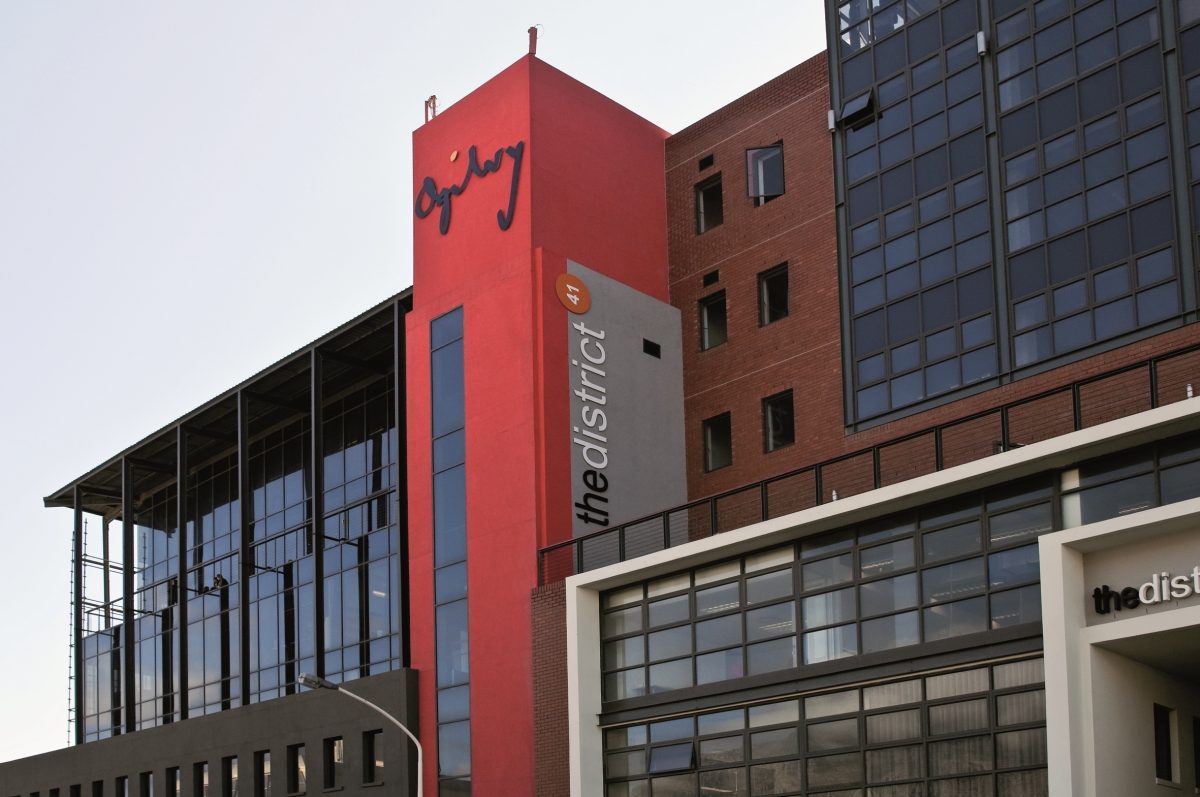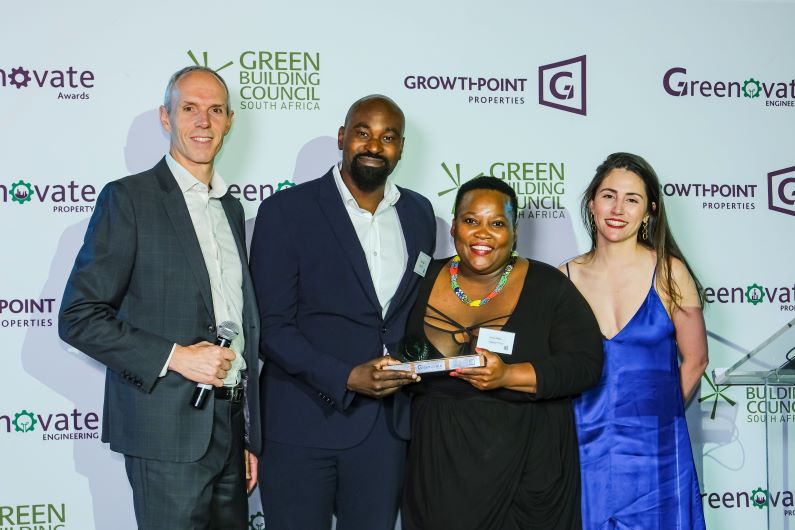

In a groundbreaking move, Growthpoint Properties has successfully taken a sizeable South African commercial building completely off the municipal water grid.
The District, in the heart of Woodstock in Cape Town, has become Growthpoint’s first “water net-positive” building. It is also the first of several commercial properties in Cape Town that Growthpoint intends to take off-grid.
The multi-tenant office and retail building has seven floors and five basement levels with 18,721sqm of lettable area that accommodates a charismatic community of 25 businesses. It is used by around 1,750 people daily who together consume around 45,000 litres of water per day.
Timothy Irvine, Growthpoint Properties’ regional asset manager for the Western Cape, says: “By taking The District and other commercial buildings off the water grid, and substituting municipal water with a safe and sustainable alternative source of drinking water, we are taking pressure off the city’s potable water reserves, adding to the resilience of the city’s water system, and contributing positively to the environment.”
At The District, a naturally occurring underground mountain spring flows to the building’s basement. For years this crystal-clear water has been pumped from the basement sump to prevent flooding. The water was pumped straight into the city’s storm-water system, where it flows into the sea less than a kilometre away.
Before the city’s water crisis, Growthpoint investigated the possibility of using this sump water as grey water for flushing the building’s toilets. However, its design, which has evolved over the years – first it was redeveloped from four buildings into two and then into one – prevented this.
However, Cape Town’s water woes spurred the team back to the drawing board and inspired them to think even bigger.
“It is incredibly frustrating to have a sustainable alternative water source that has to be flushed down the drain because it is not safe to drink. So, we challenged ourselves to find a way to use the sump to provide drinking water that is completely safe for human consumption for the entire building,” explains Irvine.
This was no simple task. Growthpoint had to identify and adapt an existing technology never before used for this type of water filtration. It also had to work with the City of Cape Town to get special legislation drafted and passed to allow it to produce water on a large scale. In addition, it had to get buy-in from the building’s tenants.
Fortunately, the process was made easier by the positive response from major stakeholders, including The City of Cape Town and tenants of The District, specifically major tenant Ogilvy Cape Town.
Vicki Buys, Managing Director of Ogilvy Cape Town adds, “Thank you to the Growthpoint team for their efforts in making this self-sufficiency happen. In spite of these measures and the rain, the city’s crisis remains real and will only be resolved if we all keep usage at a low level permanently.”
Now, Growthpoint provides all the water for this bustling building from the basement, where its filtration plant can be found in its own sterile glass-fronted room. This enables anyone to view the sump water being made into drinking water. The plant’s filtration plant installation has also been designed to create a greater understanding and awareness about water. It is even labelled so that viewers can follow the process and learn how it works.
Some 140,000 litres of water flow naturally through the sump each day, and the filtration plant has been designed to clean the entire flow.
The legislation that the City of Cape Town drafted to enable Growthpoint to produce water on a large scale came into effect in November 2017, when Growthpoint was given the go-ahead to become a Water Services Intermediary. It can, however, only supply water to those with which it has a contractual obligation – its tenants. It does this at exactly the same rate as the municipality.
With this legislation in place, other commercial property owners are also enabled to do the same.
“Net-zero water initiatives are an important part of Growthpoint’s journey as it strives to make all its new developments net-zero by 2030,” points out Irvine. “This is an exciting leap forward on our journey, which is for the betterment of everyone.”
And, The District is the first of a number of buildings that Growthpoint intends to take off the municipal water grid. The next building it is aiming to take off-grid is 200 on Main. All the buildings identified are in Cape Town, as this is the only city with the legislation in place to enable it.
“Growthpoint would certainly consider doing the same with suitable buildings in other cities and is happy to work with them to achieve this,” says Irvine. Growthpoint is already ensuring that all the new buildings it develops across South Africa have the potential to go off the water grid to future-proof its property assets.
Growthpoint provides space to thrive with innovative and sustainable property solutions. It is an international property company with assets on three continents and the largest South African primary REIT listed on the JSE. It owns and manages a diversified portfolio of property assets, locally and internationally. Growthpoint is a Top 10 constituent of the FTSE EPRA/NAREIT Emerging Index, a constituent of the FTSE/JSE Top 40 Index and the FTSE4Good Emerging Index. It has been included in the FTSE/JSE Responsible Investment Index for eight years running.
A look into the filtration process Growthpoint developed for The District:
The filtration process begins when water from the sump is placed in holding tanks. It then goes through a bag-filter which filters our bigger debris, such as leaves and stones, to protect the filters before passing through ultra-filtration canisters which filters it to 0.02 microns, or one-thousandth of the diameter of a human hair. This cleans the water, but to remove any viruses the water then passes into a charcoal filtration canister to absorb bacteria and any smells. After this, it flows to a holding tank where it is dosed with ozone, which clumps together anything that may still be left in the water before pushing it through reverse osmosis, which strips everything out of the water. This process is effective to 0.0007 microns, and is the same process used to remove salt from seawater. After this thorough filtration process, the water is re-mineralised with calcium. Unlike municipal water, no chlorine is added. Finally, water is then fed to the building’s water system, via holding tanks.
To ensure the water is safe to drink, the filtration plant is equipped with a system that measures conductivity. While water itself doesn’t conduct electricity, the impurities in water do. The filtration system immediately shuts down if there is a change in the conductivity levels of the filtered water.
/ends
Growthpoint Properties:
www.linkedin.com/company/growthpoint-properties-ltd
www.youtube.com/GrowthpointBroadcast
More news
- CELEBRATING EXCELLENCE IN THE RESIDENTIAL PROPERTY SECTOR
- PART 4: GIBS PANEL DISCUSSES INTEMEDIATE CITIES ROLE IN AFRICA’S DEVELOPMENT
- EXPOSED AGGREGATE PAVERS COMPLEMENT NEW LIFESTYLE CENTRE
- GIBS PANEL EXPLORES ROLE OF INTERMEDIATE CITIES IN SA’S DEVELOPMENT PART 3
- CITI-CON’S CONCRETE KNOWLEDGE SUCCESSFULLY DEPLOYED ON NEW LANDMARK DEVELOPMENT





